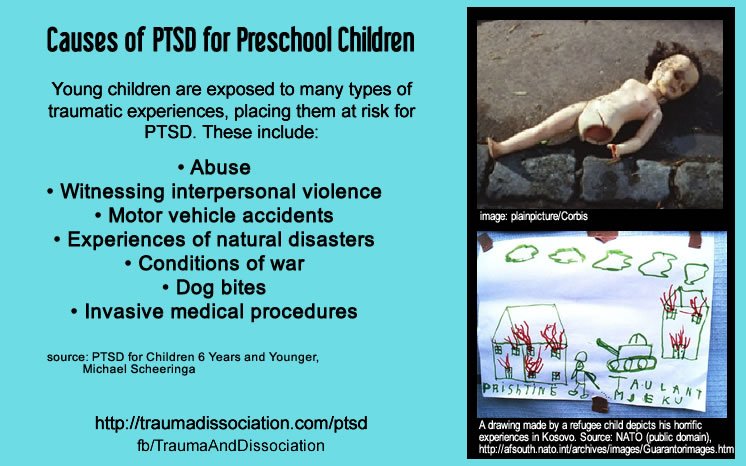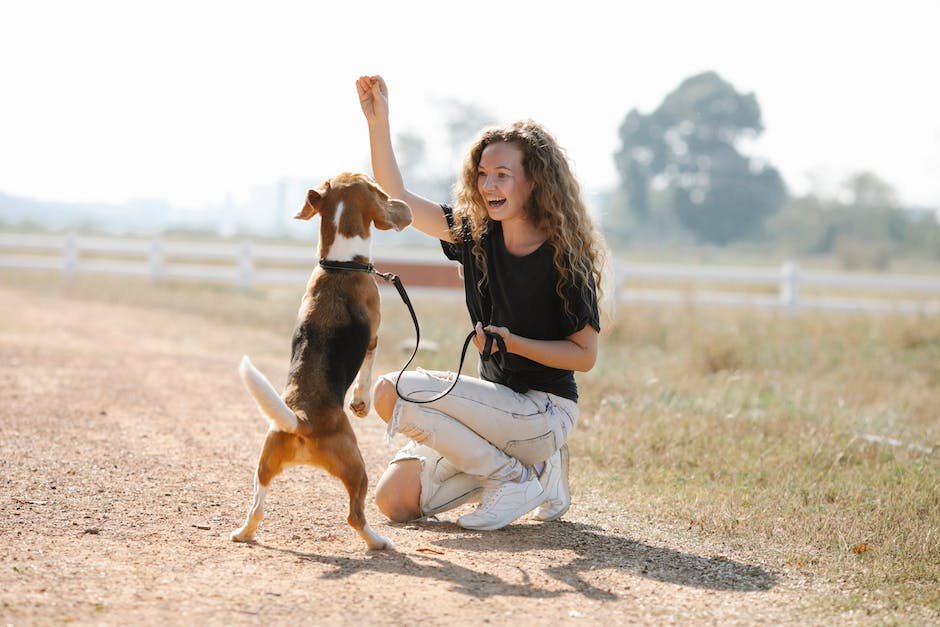With wagging tails and gentle eyes, therapy dogs have the remarkable ability to bring comfort, joy, and healing to those in need. From nursing homes to hospitals, schools to disaster areas, these four-legged heroes provide a unique form of emotional support that can make a world of difference. However, behind their serene disposition lies hours of rigorous training, with one critical aspect standing out: desensitization. Delicate yet powerful, this technique plays a vital role in shaping therapy dogs into the calm, unfazed companions they are known to be. In this article, we will delve into the importance of desensitization in therapy dog training, exploring its profound impact on these remarkable canines’ abilities to navigate various environments, handle challenging situations, and uplift countless lives.
Table of Contents
- The Value of Desensitization in Therapy Dog Training
- Building Emotional Resilience: The Role of Desensitization Techniques
- Enhancing Responsiveness: Desensitization as a Key Training Tool
- Tailoring Desensitization Approaches for Successful Therapy Dog Training
- Practical Recommendations for Incorporating Desensitization in Therapy Dog Training
- Q&A
- Wrapping Up

The Value of Desensitization in Therapy Dog Training
Desensitization is a crucial aspect of therapy dog training that holds immense value in ensuring the effectiveness and success of this specialized form of canine therapy. By gradually exposing therapy dogs to various stimuli that they may encounter during their sessions, such as loud noises, crowded environments, or unfamiliar objects, trainers can help these remarkable and compassionate canines overcome any fears or anxieties.
Through carefully crafted desensitization exercises, therapy dogs learn to remain calm and composed in situations that might typically cause distress or trigger an unwanted response. By repeatedly exposing the dogs to these stimuli in controlled and safe settings, trainers gradually diminish their sensitivity and help them form positive associations. This process can significantly enhance their ability to provide comfort, support, and a sense of security to individuals during therapy sessions.
During desensitization training, trainers employ a range of techniques, including systematic desensitization and counterconditioning, to help therapy dogs develop resilience and adaptability. This can involve gradually increasing the intensity of the stimuli in a controlled manner while rewarding the dogs for exhibiting desired behaviors. Ultimately, through desensitization, therapy dogs become reliable partners who can remain focused, calm, and responsive even in challenging and emotionally charged environments, making them an invaluable asset in the field of therapy and support.

Building Emotional Resilience: The Role of Desensitization Techniques
Emotional resilience is the ability to bounce back from setbacks and challenges that life throws at us. It allows us to maintain a positive outlook and successfully navigate through difficult situations. As we encounter various stressors and triggers throughout our lives, it becomes essential to develop strategies to build emotional resilience. One powerful technique that can aid in this process is desensitization.
Desensitization techniques involve gradually exposing oneself to stimuli that may cause emotional distress or anxiety. By repeatedly confronting these triggers in a controlled and safe environment, individuals can learn to tolerate and manage their emotional responses more effectively. This process works by slowly decreasing the sensitivity and reactivity to specific stimuli over time.
There are several desensitization techniques that individuals can incorporate into their lives to enhance emotional resilience. These may include systematic desensitization, where individuals gradually expose themselves to the feared stimulus while practicing relaxation techniques. Another approach is cognitive restructuring, which involves challenging negative thought patterns and replacing them with more positive and adaptive ones.
In addition to these techniques, mindfulness exercises, such as meditation and deep breathing, can also play a significant role in building emotional resilience. These practices help individuals stay present in the moment and cultivate self-awareness, enabling them to better regulate their emotions when faced with challenging situations.
Overall, desensitization techniques can be powerful tools in building emotional resilience. By gradually facing and managing triggers, individuals can develop a greater sense of control over their emotions and build the capacity to navigate life’s ups and downs with greater ease and confidence.
Enhancing Responsiveness: Desensitization as a Key Training Tool
Building a strong bond with your furry companion is essential for a harmonious relationship. If you find yourself struggling with issues related to responsiveness, desensitization can be a powerful tool in your training arsenal. By gradually exposing your pet to triggers that cause anxiety or distractibility, you can teach them to remain calm and focused in any situation.
One effective way to implement desensitization is through systematic exposure. Start by introducing your pet to the trigger at a low intensity, only increasing the level as they become more comfortable. This gradual process allows your furry friend to build resilience and reframe their perception of the trigger. Whether it’s loud noises, crowded spaces, or unfamiliar objects, repetition combined with positive reinforcement will create a positive association and enhance their responsiveness over time.
Another key aspect of desensitization is consistency. Make sure to set aside dedicated training sessions to work on specific triggers. Keep these sessions short and focused, providing ample rewards and praises for progress. Remember to stay patient and understanding, as desensitization is a gradual process that requires time and effort from both you and your pet. With perseverance and a gentle approach, you’ll soon notice a significant improvement in their responsiveness and overall behavior!

Tailoring Desensitization Approaches for Successful Therapy Dog Training
During therapy dog training, it is vital to implement tailored desensitization approaches to ensure the success and effectiveness of the program. By gradually exposing dogs to various stimuli and situations that they may encounter during therapy work, we can help them overcome fears and develop a calm and confident demeanor. Here are some strategies that can be incorporated into training sessions:
1. Start with low-intensity stimuli: Begin by introducing dogs to mild forms of stimuli that they may encounter during therapy sessions. This could include gentle touches, soft sounds, and calm environments. By easing them into these experiences, we can prevent overwhelming reactions.
2. Gradually increase the intensity: As dogs become more comfortable with low-intensity stimuli, we can gradually expose them to higher levels of stimulation. This might involve introducing busier environments, louder noises, or more energetic interactions. By carefully monitoring their responses and ensuring they remain relaxed, we can build their tolerance gradually.
3. Encourage positive associations: Incorporate positive reinforcement techniques throughout training to help dogs associate therapy work with joy and reward. By providing treats, praise, and play after successful desensitization exercises, we can foster a positive attitude and create a strong motivation for them to engage in their therapy duties confidently.
Remember, every dog is unique, so tailoring approaches based on individual needs and preferences is crucial for their success as therapy dogs. With patience, consistency, and the right desensitization techniques, we can help these incredible canines become valuable assets in providing comfort and support to those in need.
Practical Recommendations for Incorporating Desensitization in Therapy Dog Training
When it comes to therapy dog training, incorporating desensitization techniques is crucial for ensuring the dogs are well-prepared to face a variety of situations. Here are some practical recommendations to help you integrate desensitization into your training regime:
- Start with a calm environment: Begin the process of desensitization in a peaceful and controlled setting. Ensure there are minimal distractions so that the dog can focus on the training exercises.
- Expose gradually: Introduce the dog to stimuli that may trigger anxiety or fear in a gradual manner. Start with low-intensity situations and gradually increase the exposure. This will help the dog build resilience and confidence over time.
- Use positive reinforcement: Reward the dog with treats, praise, and affection when they exhibit calm and confident behavior during exposure. This will reinforce the idea that the stimuli are not threatening and build positive associations in the dog’s mind.
- Vary the stimuli: Mix up the stimuli during desensitization to ensure the dog becomes comfortable with a wide range of situations. From different sounds and smells to various types of people or other animals, exposing the dog to diverse stimuli will make them adaptable in real-world therapy settings.
- Progress at the dog’s pace: Always remember to respect the individual dog’s progress and comfort level. Each dog will respond differently to desensitization, so be patient and adjust the training accordingly.
By incorporating desensitization techniques into therapy dog training, you will help your four-legged companion become better equipped to handle the unpredictable and often challenging environments they may encounter during their important role.
Q&A
What is desensitization and why is it important in therapy dog training?
Desensitization is the process of gradually exposing a dog to various stimuli in order to reduce their sensitivity or fear towards them. In therapy dog training, desensitization plays a crucial role as it helps dogs remain calm and confident in different environments, making them better equipped to provide support to individuals in need.
How does desensitization work in therapy dog training?
Desensitization involves exposing therapy dogs to different situations, people, sounds, and environments in a controlled manner. By gradually increasing exposure, dogs learn to remain calm and focused despite potentially overwhelming stimuli, allowing them to effectively fulfill their role as therapy animals.
What are the benefits of using desensitization techniques in therapy dog training?
By using desensitization techniques, therapy dogs become accustomed to various situations they may encounter during their work, such as crowded spaces, loud noises, or unexpected interactions. This allows them to better respond to their surroundings without experiencing fear or anxiety, ultimately enhancing their ability to provide comfort and support to those they interact with.
Can any dog be successfully desensitized for therapy dog training?
While desensitization can be effective for most dogs, it is important to remember that each dog has its own unique temperament and limitations. Some breeds may be better suited for certain therapy dog roles than others, but with proper guidance and professional training, many dogs can successfully be desensitized and become valuable therapy animals.
What role does the trainer play in desensitization during therapy dog training?
Trainers play a vital role in desensitization by designing gradual exposure plans and ensuring the safety and well-being of the therapy dog throughout the process. They use positive reinforcement techniques to reward desired behaviors and provide constant support, guiding the dog towards a future where they can confidently offer comfort to those in need.
How long does desensitization training typically take for a therapy dog?
The duration of desensitization training can vary depending on the individual dog, their background, and previous experiences. On average, therapy dog desensitization can take several months of consistent training and exposure to different environments. It’s crucial not to rush the process, as each dog’s progress should be evaluated on an individual basis.
Can desensitization training be beneficial for dogs even if they are not therapy animals?
Absolutely! Desensitization training can have numerous benefits for all dogs. It helps build their confidence, reduces anxiety, and improves their ability to cope with challenging situations. Whether a dog becomes a therapy animal or not, desensitization training is a valuable tool for enhancing a dog’s overall well-being and quality of life.
Wrapping Up
As we bid farewell to this enlightening exploration of the vital role desensitization plays in therapy dog training, let us take a moment to cherish the distant echoes of barking and wagging tails. The essence of desensitization lies not only in its therapeutic value but in its ability to weave an unbreakable bond between therapy dogs and those they serve.
In this kaleidoscope of canine understanding, desensitization acts as a compassionate conductor, guiding our four-legged companions to flourish in the face of adversity. Like a masterful painter, we daub their world with patience, unveiling a landscape where fears dissipate, and anxieties retreat to insignificance. Through this process, our devoted therapy dogs learn to dance gracefully amidst chaos, imparting stability and healing to the lives they touch.
As we relinquish the reins of this discourse, let us reflect on the remarkable transformation that arises when we offer unyielding support to these remarkable creatures. Beyond the traditional training methods, desensitization emerges as the unsung hero, illuminating a path towards a brighter future, not only for our canine companions but for the elusive shadows that inhabit the human spirit.
No longer bound by the shackles of trepidation, therapy dogs become ambassadors of solace and empathy. Their gaze, once tinged with uncertainty, now radiates warmth and understanding. It is through the artful dance of desensitization that the language of healing is spoken, fostering acceptance and fostering unspoken connections that transcend boundaries.
As the final notes of this symphony of desensitization fade into the distance, may we remember that the work has only just begun. Let these words serve as a rallying cry, encouraging us all to embrace the importance of desensitization in therapy dog training, a critical step towards a world where compassion reigns and each pawprint carries the power to mend hearts and minds.
So, dear reader, let us walk hand-in-paw towards a future where therapy dogs and their miraculous abilities are revered and cherished. Let us celebrate the transformative effects of desensitization, forever mindful of the beautiful dance between healer and healed.
As an affiliate, my content may feature links to products I personally use and recommend. By taking action, like subscribing or making a purchase, you’ll be supporting my work and fueling my taco cravings at the same time. Win-win, right?
Want to read more? Check out our Affiliate Disclosure page.
